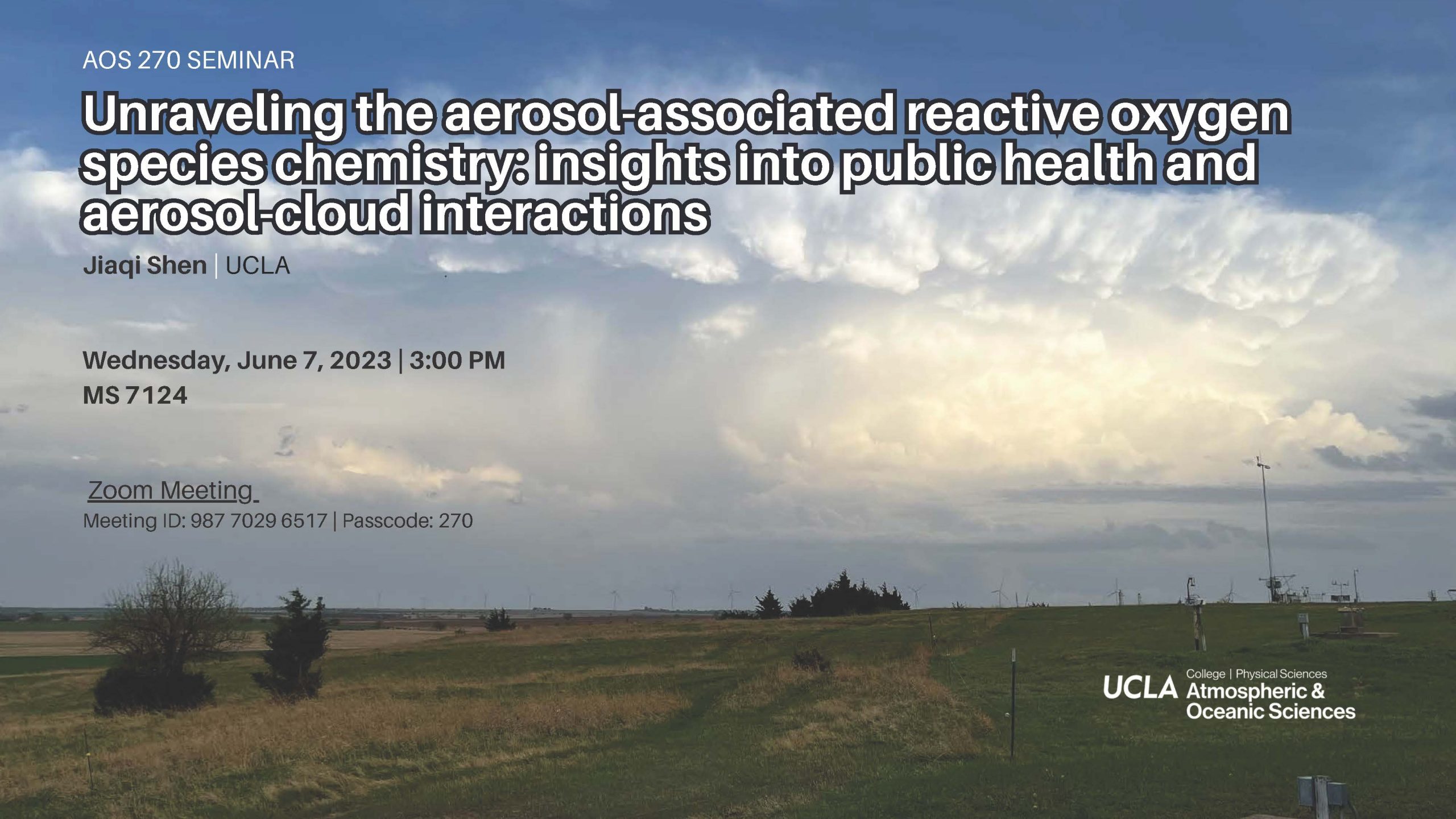Abstract:
Reactive oxygen species (ROS) are a class of highly reactive oxygen-bearing molecules including the hydroxyl radical (OH), superoxide radical (O2.-) and hydrogen peroxide (H2O2). When aerosols encounter water, either in clouds or in lungs, they generate ROS in quantities that impact cloud chemistry and potentially underly aerosol-induced health impacts.
Because ROS generation may be a better metric than particulate matter mass to assess the health impacts of particles, a variety of oxidative potential (OP) assays have been developed to quantify aerosol particles’ ability to generate ROS or consume antioxidants. However, understanding of these OP assays are limited, both in terms of their complex chemistry and their ability to predict PM-induced health effects. In first part of the talk, I will present a combination of chemical kinetics modeling, laboratory measurements, and source apportionment analysis to enhance our understanding of OP. The questions I will address in this talk include: 1) what chemical components are different OP metrics responding to? 2) What emission sources contribute to OP? and 3) What OP metrics are more relevant to adverse health outcomes? My results highlight the possibility of using the OH assay to predict PM-induced health risk. Furthermore, these results show, for the first time in US that people in lower socioeconomic position are exposed to not only higher particle concentration but also more toxic particles.
ROS also play an important role in atmospheric chemistry. They control atmospheric oxidizing capacity as well as the formation and transformation of organic aerosols. ROS in clouds and fog, however, are much less well understood. In the second part of the talk, I will shift to atmospheric chemistry with a focus on the OH burst – a recently discovered fast OH formation phenomenon for nascent cloud droplets. We developed a method to grow aerosol particles into nascent cloud droplets and collect them directly into a reagent that measures OH radical formation. I used this new method in two field campaigns to understand the dependence of the OH burst on different types of aerosols. I further combined HYSPLIT and ERA5 reanalysis data on cloud to assess the influence of cloud processing on particles’ ability to generate the OH burst. Biomass burning organic aerosols were found to be the major chemical driver of the burst. Results also indicate an important role of cloud liquid water content in processing chemicals in the atmosphere.

